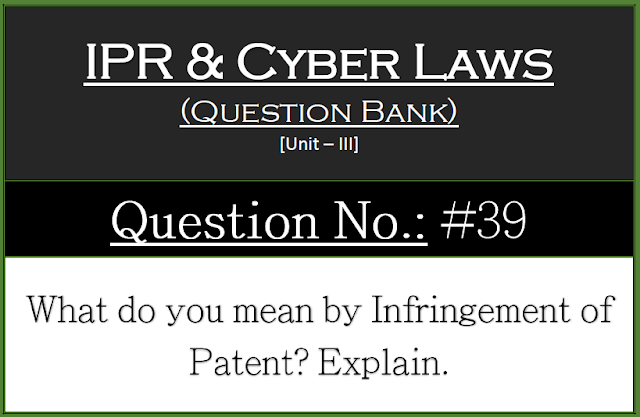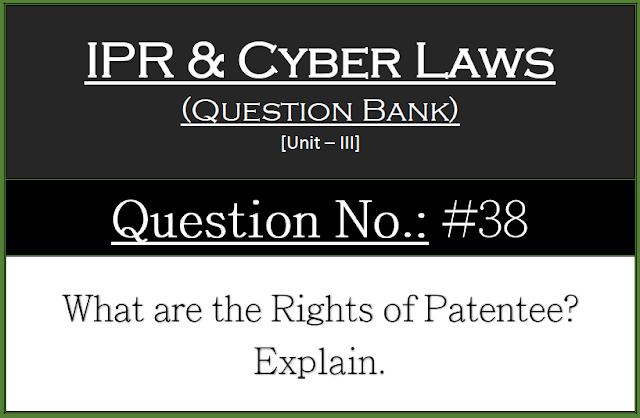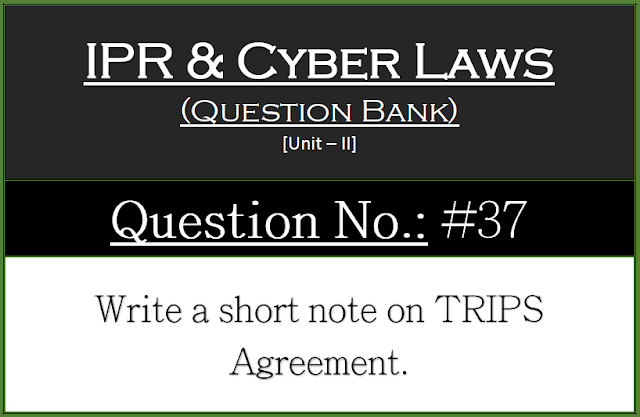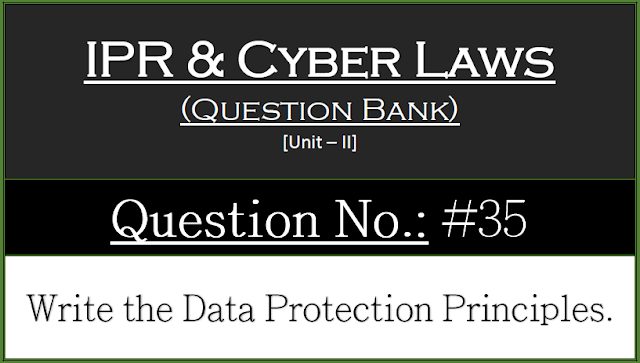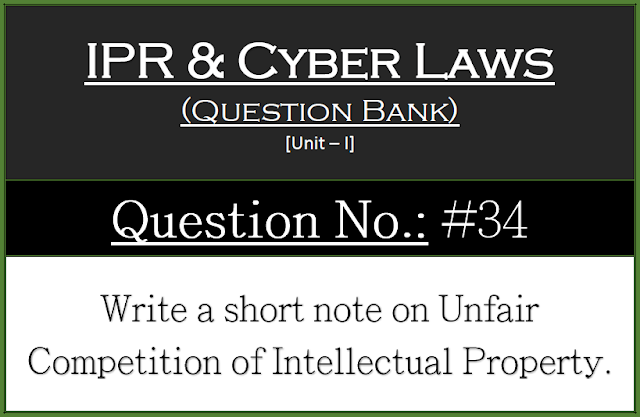Questions Bank
05:48
Write defences of Trademark.
 |
| Write defences of Trademark. |
DOWNLOAD:
☛ PDF
☛ View
Write defences of Trademark.
SOLUTION:
Defences of Trademark:
- The defendant may set up following defences in an action for infringement against him depending upon the applicability of the relevant defense to his case:
- The plaintiff in the suit has no title to sue-questioning. The proprietorship of the trademark owner may do this.
- The use of the mark by the defendant is not an infringement or it protected by the provisions of section 30 which lists out the acts which do not constitute infringement.
- The defendant’s right to use the contested mark arises by virtue of concurrent registration.
- The defendant is the prior-user of the disputed mark.
- The defendant has been an honest concurrent user.
- The use complained of in merely the defendant’s Bonafide use of his own name, address & description of goods which are protected by the Act.

